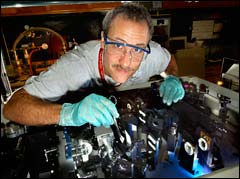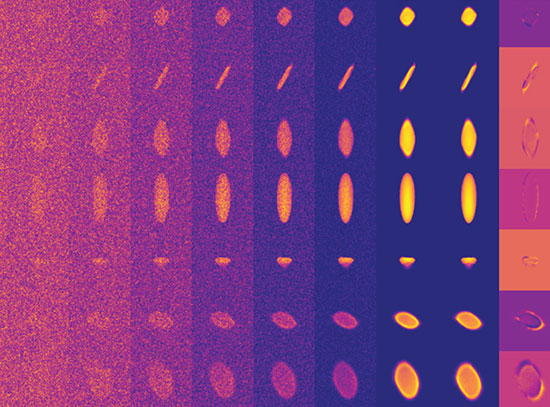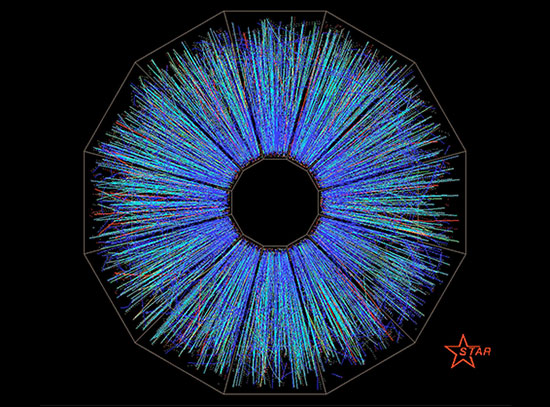Brookhaven Scientists Patent Portable Sensor That Detects Harmful Substances
Useful new tool for emergency responders, national security
May 11, 2004
UPTON, NY - Scientists at the U.S. Department of Energy's (DOE) Brookhaven National Laboratory have been awarded U.S. patent number 6,608,677 for a portable device that quickly detects and identifies unknown chemical and biological substances from safe distances. The sensor may be useful as a tool to help improve national security and could be used, for example, by emergency personnel or at sensitive locations, such as airports.

Art Sedlacek working on one of his laser systems.
"The technology developed here at Brookhaven Lab represents a fundamentally new sensing paradigm, able to detect and identify unknown materials without requiring contact with the substance," said Arthur Sedlacek, a researcher at Brookhaven and one of the two scientists that developed the sensor. The other is Mark Ray, formerly of Brookhaven Lab.
"Currently, when first responders come across an unknown chemical spill, the technology now available requires that they either get close to the substance or take a sample of the material for analysis, both of which have to be conducted prior to knowing what the material is," Sedlacek continued. "Our sensor is specifically designed to detect and identify chemical spills and other ground contamination without requiring sample collection, thus providing the user with an inherently safer tool."
The device, called a mini-Raman light detection and ranging (lidar) sensor, is able to analyze and identify many potentially harmful substances, such as gases, solid or liquid materials, contaminants, and pollutants, from a distance of approximately two to 50 meters. The identification process takes only minutes, and the sensor is small enough to be transported and carried by emergency responders. "The mini-Raman sensor is a vast improvement over traditional lidar, which can only detect airborne substances that are kilometers away," said Sedlacek.
The system works by illuminating the target substance with a laser beam, which consists of tiny "particles" of light called photons. The photons scatter off of the substance, are reflected back toward the sensor, and then collected by a telescope, one of the sensor's components. Another component then analyzes the scattering pattern. Because every chemical and biological substance has a unique pattern, the sensor is able to determine the identity of the substance. It can be linked to a notebook computer that will display the results of the analysis, based on known data of tens of thousands of biological and chemical compounds.
In the event that the substance in question is not listed in the sensor's database, its readout could be configured to indicate this. According to Sedlacek, work is currently underway to compile a library of harmful substances for the U.S. Department of Defense, which could be used with the lidar system.
The mini-Raman lidar system has several civilian and military applications. For example, it could be used to detect biological or chemical agents that have been maliciously released in a populated area. More locally, it could detect the composition of environmental spills or seepage, determining whether a substance threatens water supplies or wildlife. In airports or harbors, workers could identify unknown substances found in luggage or cargo. Because the analysis is done on the spot, without removing the sample and waiting for test results, the device allows serious situations to be dealt with efficiently and false alarms to be realized quickly.
The lidar system has been in development at the Lab since the late 1990s, sponsored by the former DOE Office of Nonproliferation and National Security (now the Defense Nuclear Nonproliferation program within the DOE's National Nuclear Security Administration). Additionally, since 1999, Brookhaven and ITT Industries, a global engineering and manufacturing company, have been working on modifying the sensor for the detection of chemical agents during battle. This close collaboration provides Brookhaven with unique expertise on the issues associated with moving the technology into the area of chemical and biological sensing. Additionally, the DOD elected to fund ITT Industries to develop a militarized version of the sensor, known as Joint Chemical Spill Detection (JCSD), for testing in 2005.
In March 2003, the mini-lidar technology was licensed to UTEK Corporation, a technology transfer company. UTEK has assigned the license to Circle Group Holdings, Inc.
2004-10177 | INT/EXT | Newsroom









